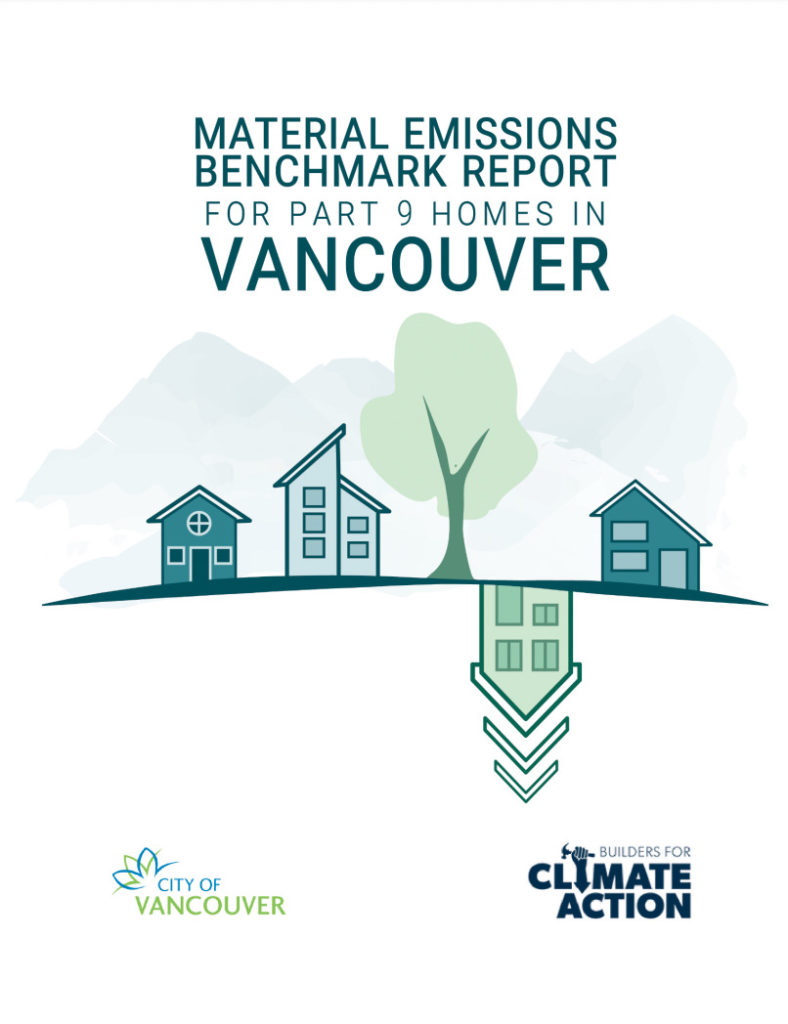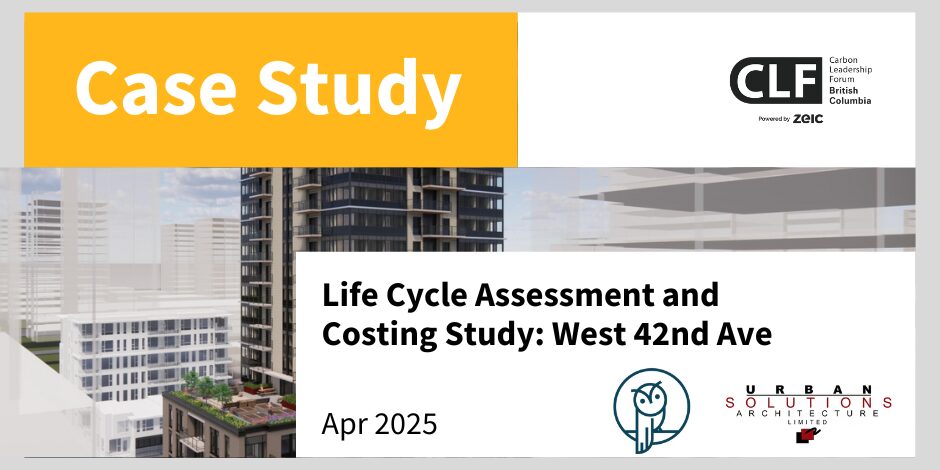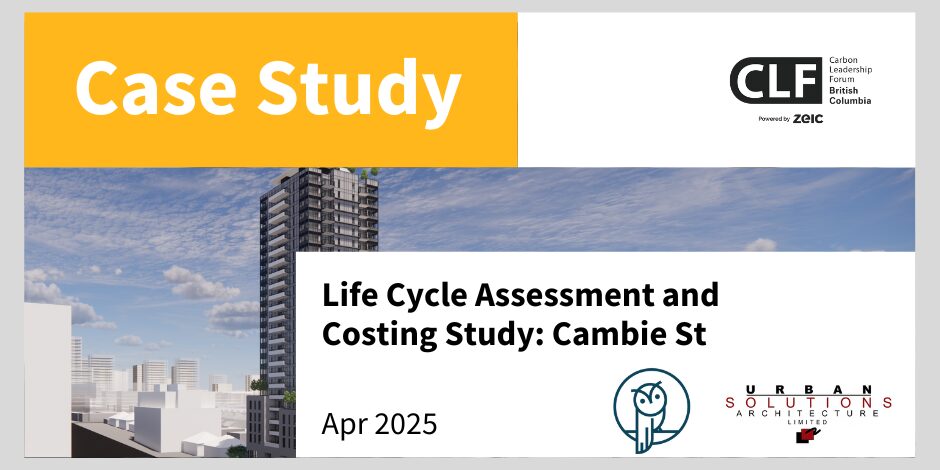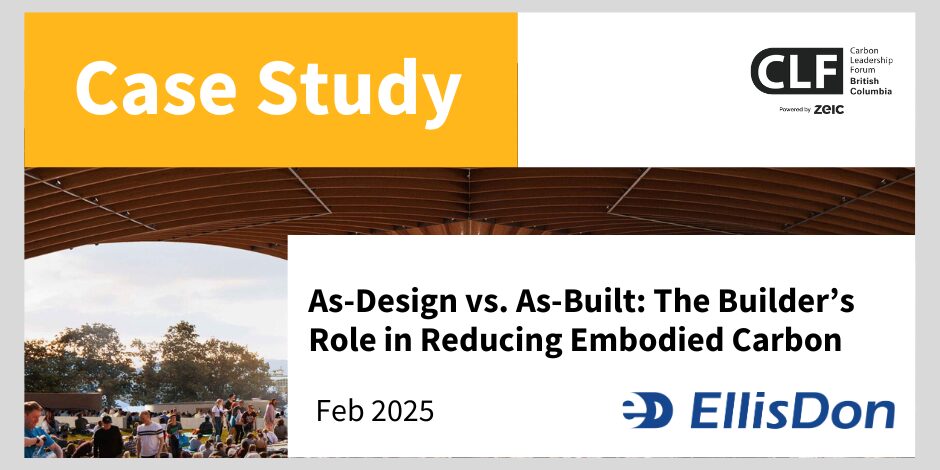
Discover Montessori: How We Became a 2023 BC Embodied Carbon Awards Winner
January 30, 2024
Newsletters: Latest Edition plus 2024 Issues
February 22, 2024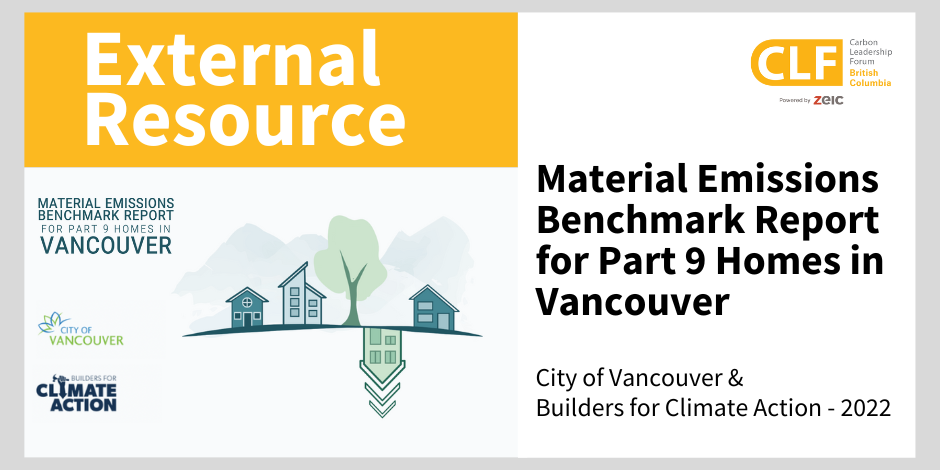
City of Vancouver and Builders for Climate Action - 2022
The City of Vancouver is a world leader in addressing embodied carbon in the built environment, having set a target of reducing embodied carbon from new buildings by 40 percent by 2030. But in order to make reductions, there must first be a benchmark understanding of embodied carbon emissions in today’s new homes. This study examines 13 typical new homes using as-built plans to assess the carbon footprint attributable to the structure, enclosure and partitions of these homes. Using the BEAM estimator tool, each of the 13 homes was modeled, creating a valuable data set.
Based on the average net Materials Carbon Emissions (MCI) of the study, it is recommended that the City of Vancouver use a rounded baseline of 200 kg CO2e/m2 of heated floor area to represent the typical average emissions for new homes. This baseline should be based on the A1-A3 (cradle-to-gate) emissions for all structure, enclosure and partition materials.
In addition to the suggested baseline, the report includes recommendations related to:
- Selection of metrics for measuring embodied carbon;
- Regulating whole building, not individual materials;
- Concrete;
- Insulation;
- Embodied and operational emissions;
- Double- and triple-pane windows;
- Below grade living space; and
- High impact of bog foundation.
Follow the link below to read the full report.


